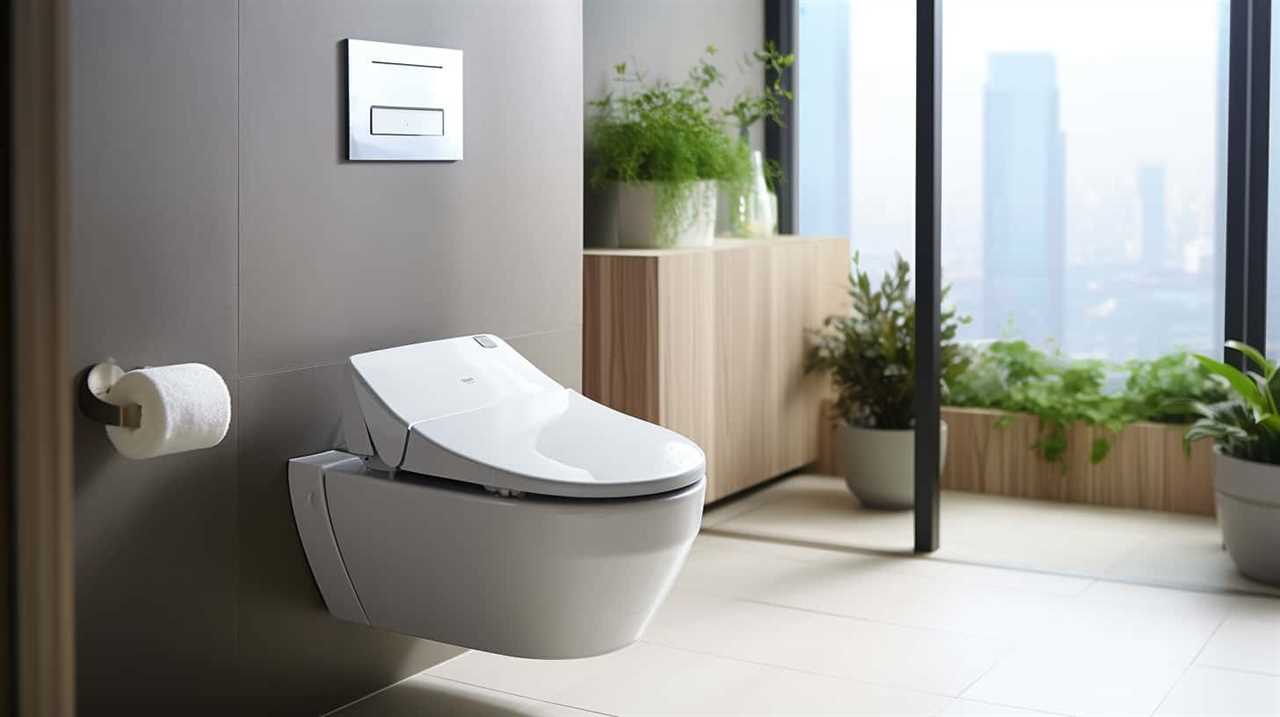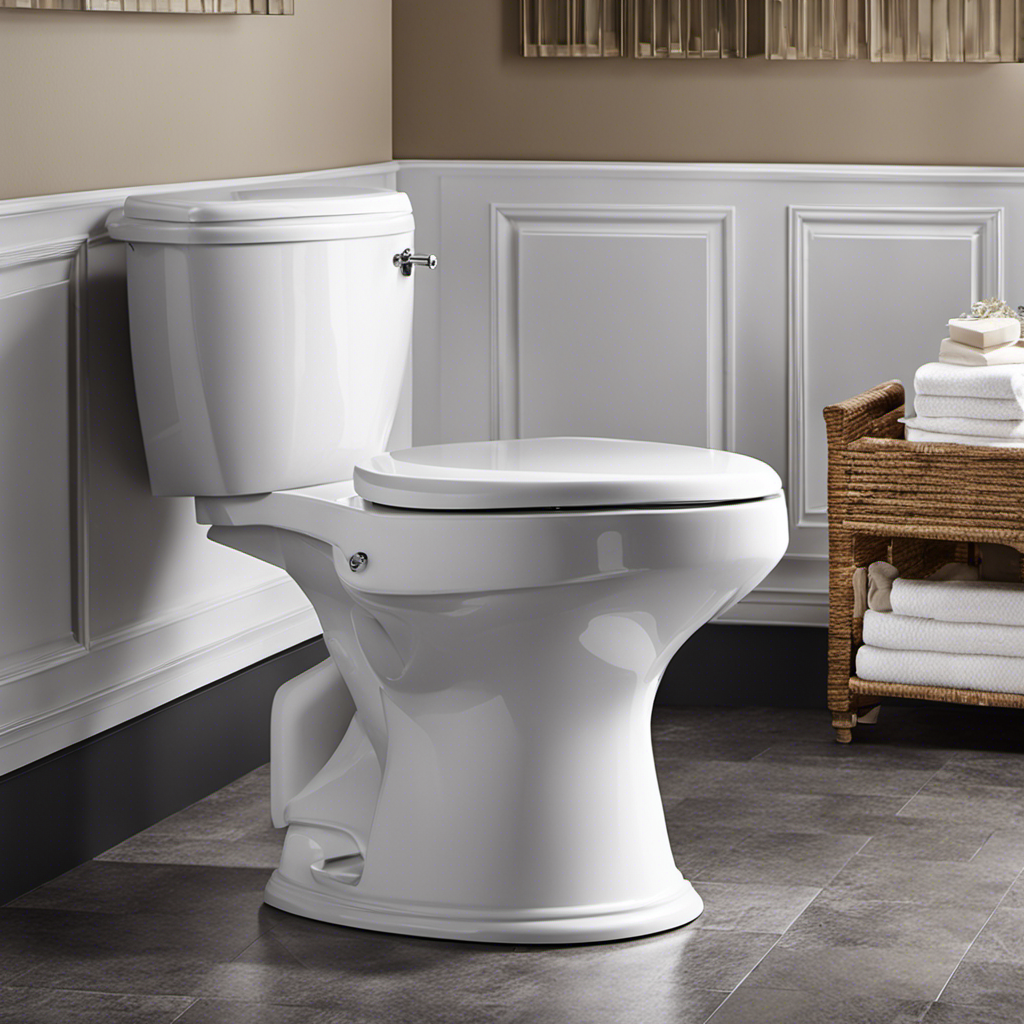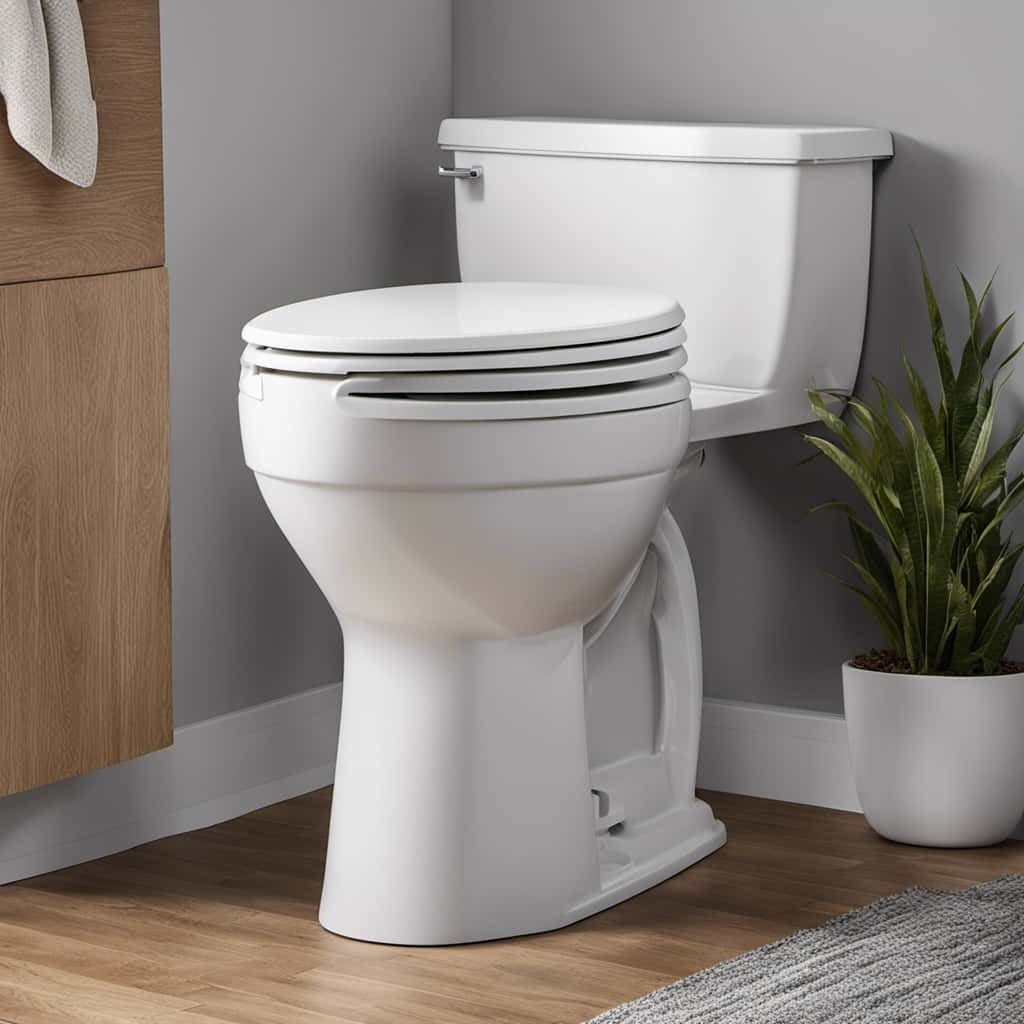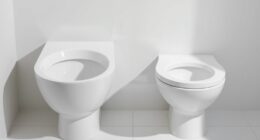Have you ever wondered why your toilet tank just won’t seem to empty completely? It’s like watching a slow-motion dance, as the water swirls around but never quite disappears.
Well, fear not, fellow toilet troubleshooters, for we are here to shed some light on this conundrum. In this brief article, we will explore the possible reasons behind your stubbornly full tank, from clogged drains to faulty valves, equipping you with the knowledge to master your toilet’s water flow.
Key Takeaways
- A clogged toilet drain can prevent the tank from emptying completely.
- A faulty flapper valve can contribute to a partially filled tank.
- Insufficient water supply can cause a toilet tank to not empty completely.
- A malfunctioning fill valve can prevent a toilet tank from emptying completely.
Clogged Toilet Drain
We often encounter a clogged toilet drain, which can prevent the tank from emptying completely. When faced with this issue, there are a few tools that can help resolve the problem.
The first tool to try is a toilet plunger. This simple yet effective device creates pressure and suction, which can dislodge the blockage and allow water to flow freely.
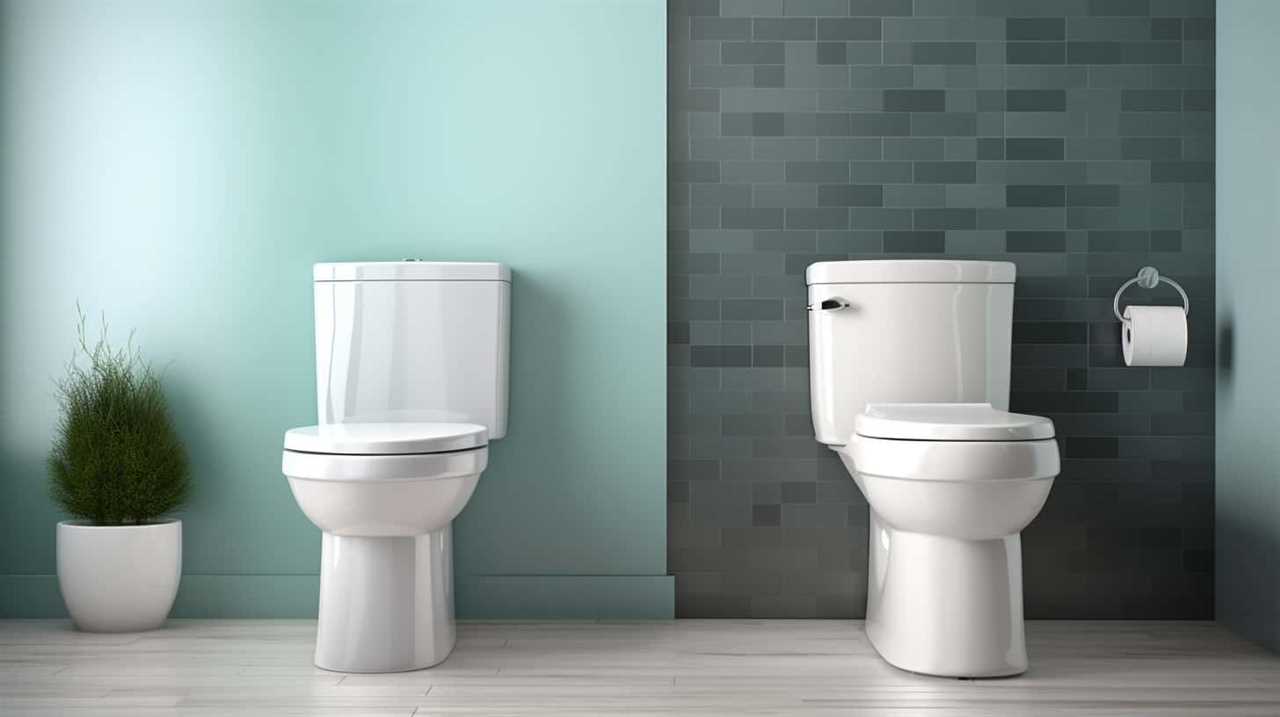
If the plunger fails to solve the issue, a drain snake can be used. A drain snake, also known as a plumber’s snake or an auger, is a long, flexible tool designed to navigate through the pipes and break up or remove the obstruction.
Faulty Flapper Valve
To continue our discussion on why a toilet tank may not empty completely, a common issue that can contribute to this problem is a faulty flapper valve.
The flapper valve is a rubber mechanism located at the bottom of the toilet tank that controls the flow of water into the bowl. When functioning properly, the flapper valve lifts up when the toilet is flushed, allowing water to flow from the tank into the bowl.
However, if the flapper valve is faulty, it may not lift up completely or may not create a tight seal, causing water to continuously leak into the bowl. This can result in a partially empty tank.
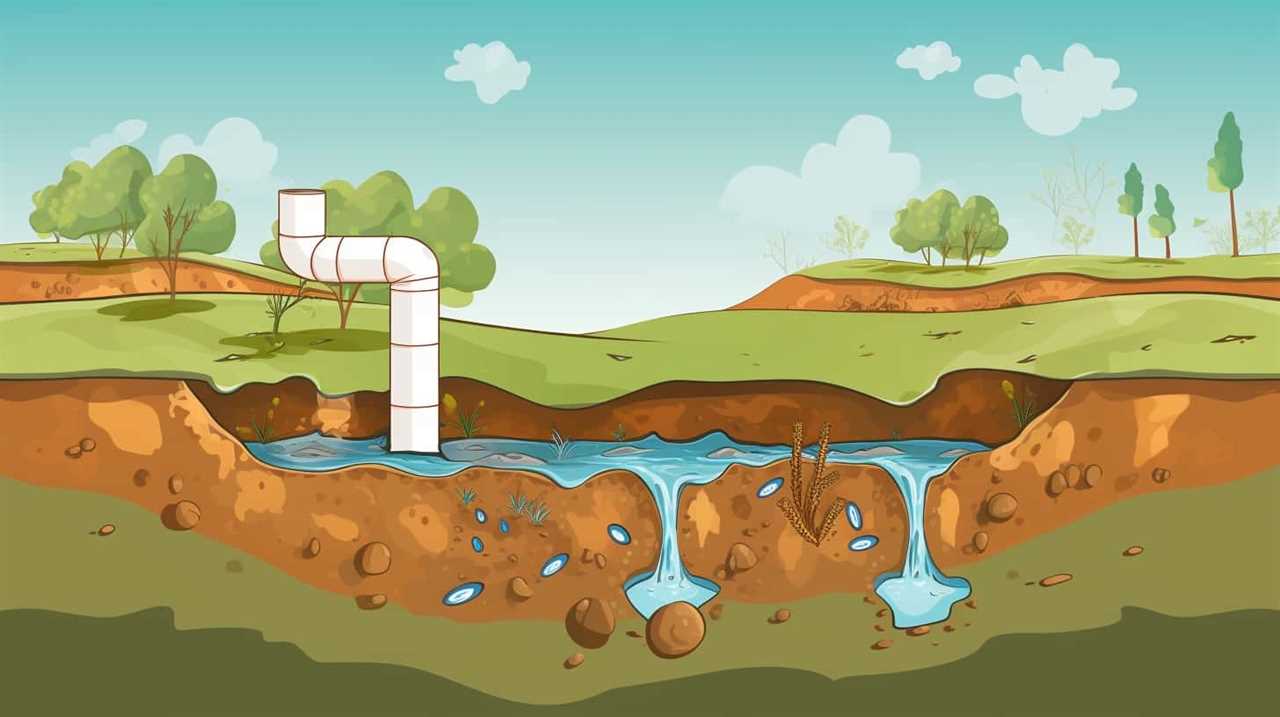
To resolve this issue, flapper replacement or repair is necessary. By replacing the faulty flapper valve, the toilet tank will be able to empty completely and prevent water wastage.
Inadequate Water Supply
One possible cause for a toilet tank not emptying completely is due to an insufficient water supply. Low water pressure or a water line blockage can lead to inadequate water flow into the tank, preventing it from emptying properly.
Low water pressure can occur due to various reasons, such as a closed or partially closed water valve, a malfunctioning pressure regulator, or issues with the municipal water supply.
A water line blockage, on the other hand, can be caused by mineral deposits, debris, or even tree roots infiltrating the pipes.
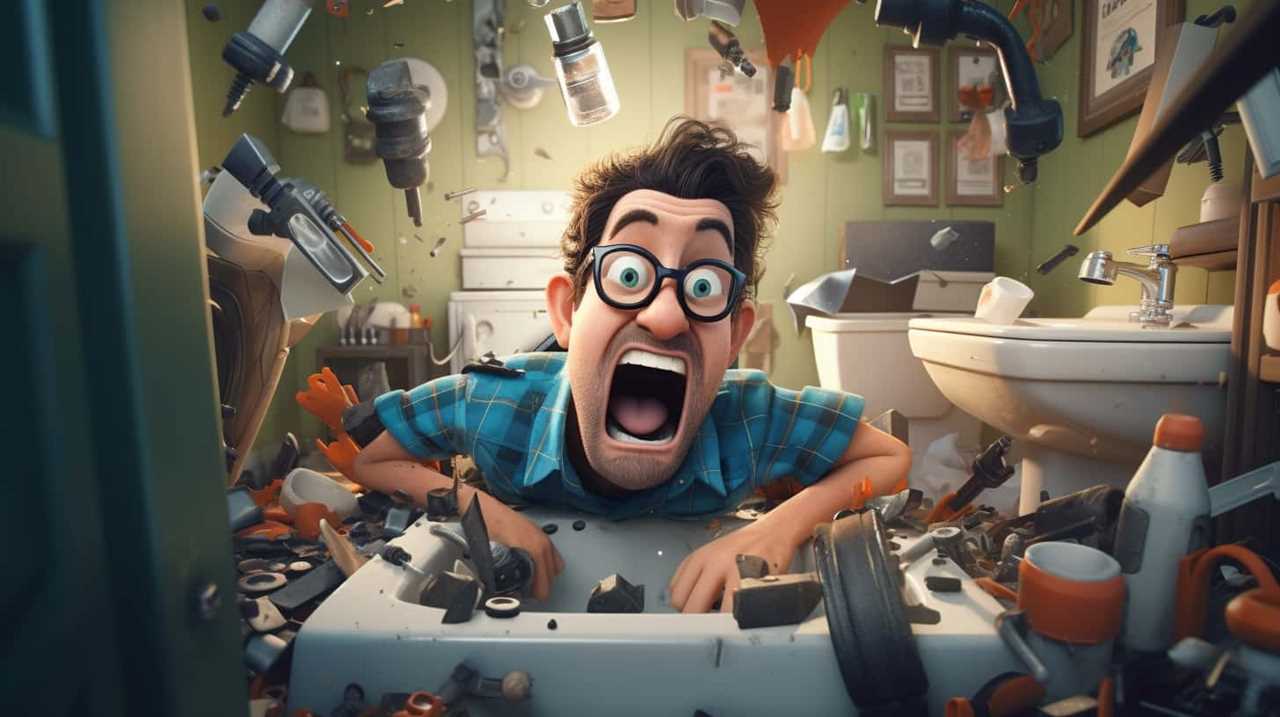
To address this issue, it’s important to check the water pressure, ensure that the water valve is fully open, and inspect the water line for any obstructions. If necessary, a professional plumber should be consulted to diagnose and resolve the problem.
Malfunctioning Fill Valve
A common cause of a toilet tank not emptying completely is due to a malfunctioning fill valve. The fill valve is responsible for regulating the water flow into the tank after each flush. If the fill valve isn’t functioning properly, it can result in inadequate water pressure, preventing the tank from emptying completely.
Another issue that may arise with a malfunctioning fill valve is sediment buildup. Over time, minerals and debris can accumulate in the valve, restricting the flow of water and causing the tank to not empty fully. To address this problem, it’s necessary to replace or repair the fill valve to ensure proper functioning and water flow.
Failure to address a malfunctioning fill valve can lead to other issues, such as an incorrect tank water level, which we’ll discuss in the next section.
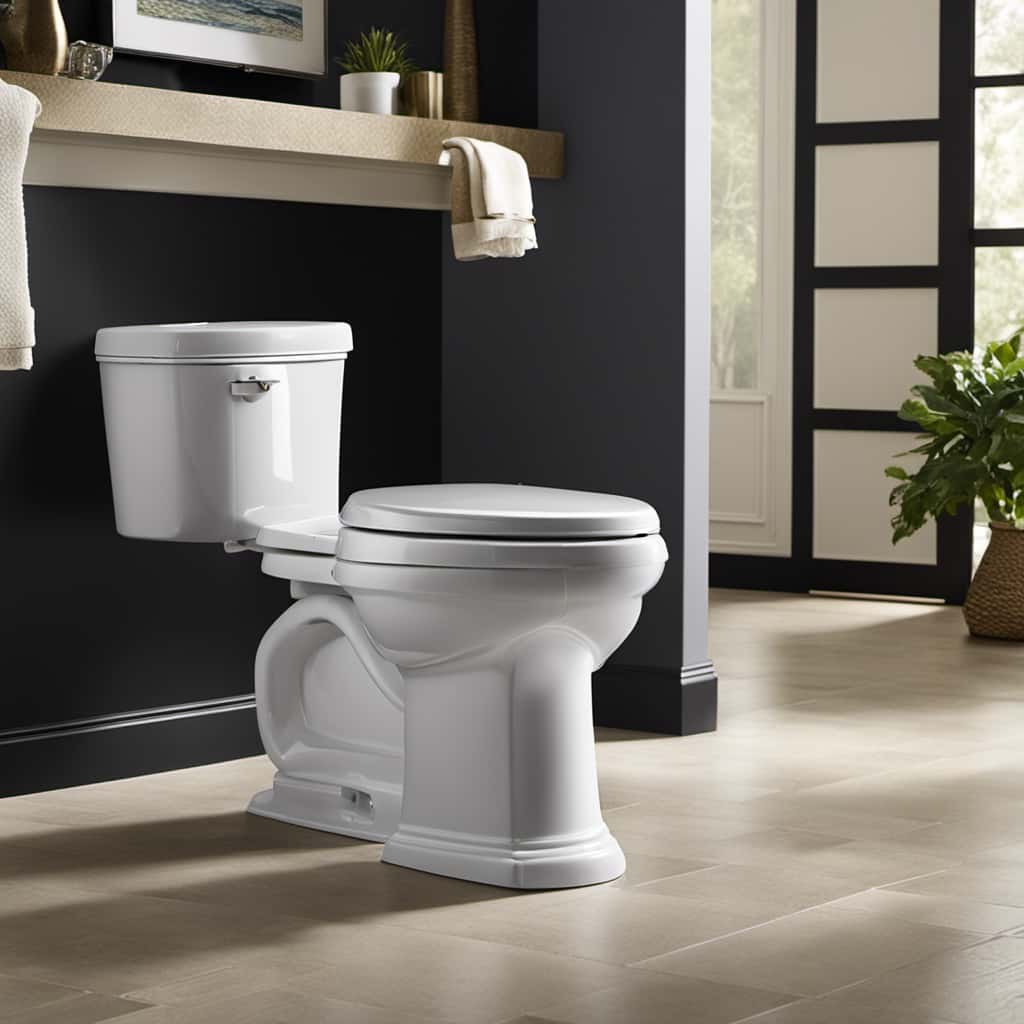
Incorrect Tank Water Level
Continuing from the previous subtopic, we encountered issues with a malfunctioning fill valve, which can result in an incorrect tank water level.
Another factor that can contribute to an incorrect tank water level is water pressure and tank size.
Water pressure plays a crucial role in determining the water level in the tank. If the water pressure is low, the tank may not fill up completely, leading to an insufficient amount of water for flushing. On the other hand, if the water pressure is too high, it can cause the tank to overflow, wasting water and potentially causing damage.
Additionally, the size of the tank also affects the water level. If the tank is too small, it may not hold enough water for a full flush, resulting in an incomplete emptying of the tank.
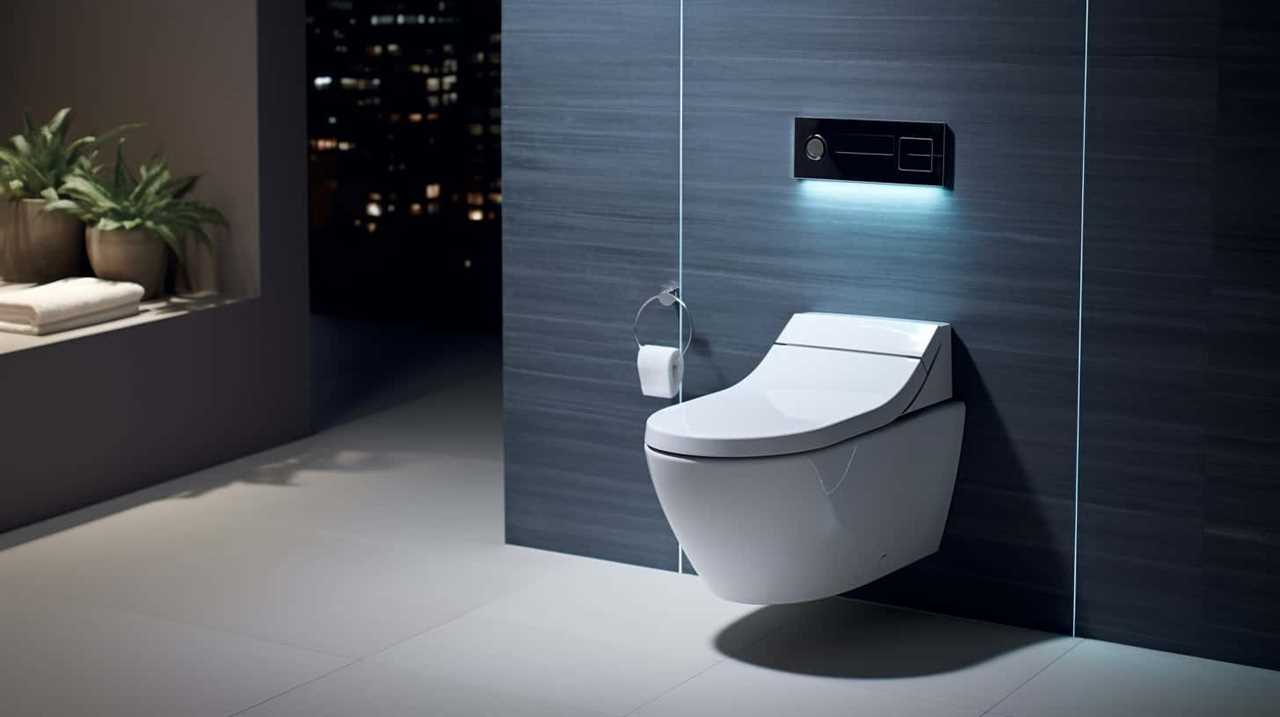
To ensure the correct tank water level, it’s important to check the water pressure and consider the appropriate tank size for your toilet.
Frequently Asked Questions
How Do I Know if My Toilet Drain Is Clogged?
If your toilet won’t drain properly, there may be a toilet drain blockage. Signs of a toilet clog include slow draining or water backing up. It’s important to address this issue promptly to prevent further damage.
Can a Faulty Flapper Valve Cause the Toilet Tank to Not Empty Completely?
Yes, a faulty flapper valve can cause the toilet tank to not empty completely. When the flapper valve doesn’t seal properly, it can lead to leaks, preventing the tank from fully emptying and affecting the filling process.
What Are Some Signs of an Inadequate Water Supply to the Toilet Tank?
Common causes of insufficient water supply to the toilet tank include a malfunctioning fill valve, low water pressure, or a clogged water supply line. Troubleshooting tips for a partially filled toilet tank involve checking these components for issues.

How Can I Tell if My Fill Valve Is Malfunctioning?
When troubleshooting a running toilet, common signs of a malfunctioning fill valve include constant water running and incomplete tank filling. To fix it, adjust the float or replace the fill valve.
What Are the Consequences of Having an Incorrect Water Level in the Toilet Tank?
Having an incorrect water level in the toilet tank can lead to several consequences. These include reduced flushing power, potential clogs, and increased water usage. It is important to maintain a proper water level for optimal toilet performance.
Conclusion
Well, it seems like your toilet tank just doesn’t want to cooperate.
From a clogged drain to a faulty flapper valve, there are a multitude of reasons why it won’t empty completely.
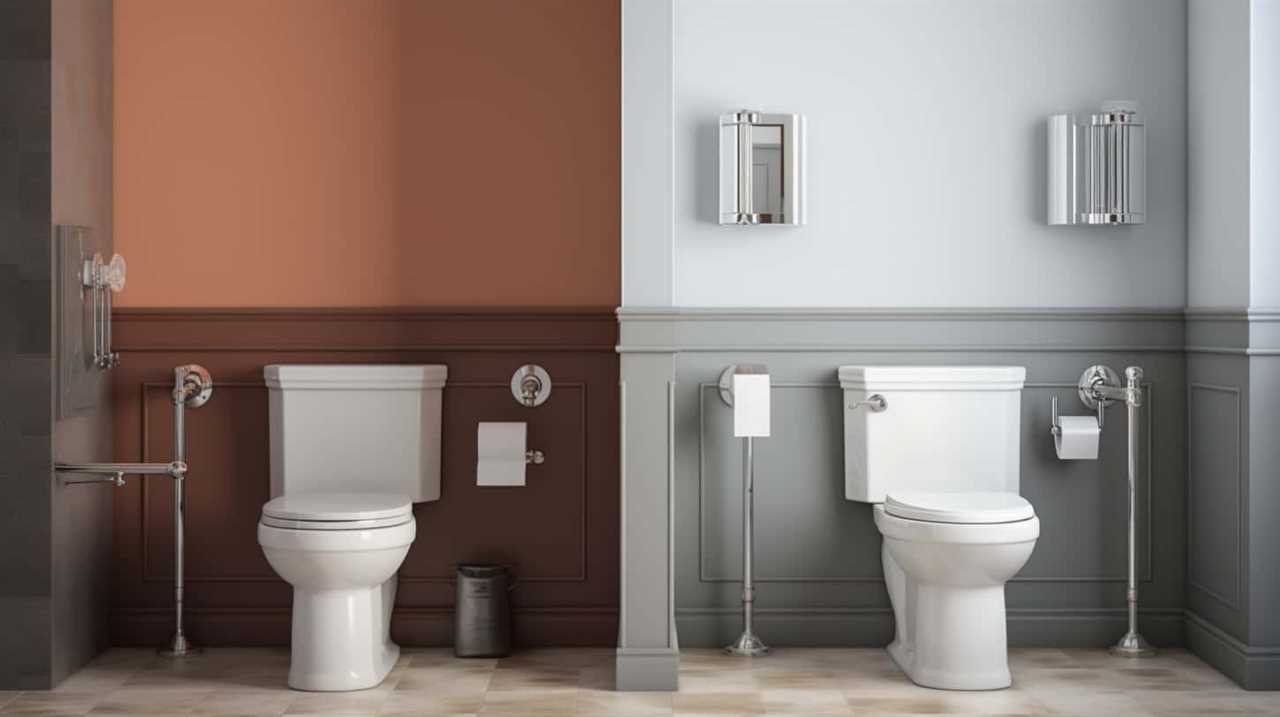
And let’s not forget about the inadequate water supply or the malfunctioning fill valve.
It’s like a symphony of plumbing problems!
So, sit back, relax, and enjoy the never-ending struggle of getting your toilet to do its one job properly.
